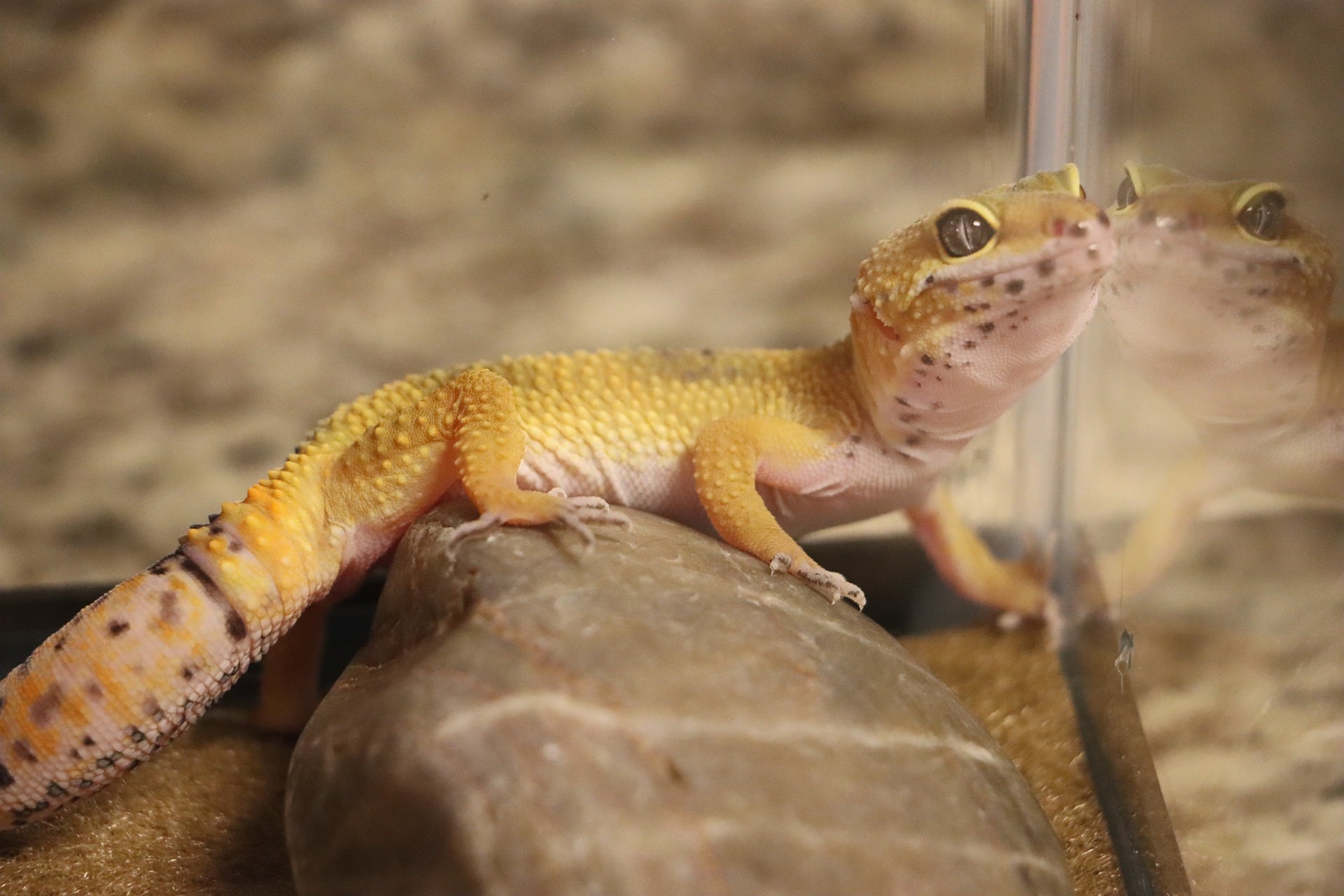
Tanzanian Tailless Whip Scorpions make a creepy, cool, and exotic pet for invertebrate lovers. These creepy crawlies have notoriously been featured on a variety of television shows, such as Fear Factor.
However, you really don’t have anything to fear about these weird creatures. Even though they look a bit scary, they don’t produce any silk or venom. Plus, they are naturally docile, which means they rarely use their pinchers. As a result, they do not pose any real threat to humans at all.
Thus, if you are looking to add a really weird creature to your home, the Tanzanian Tailless Whip Scorpion is a great option. Read on to learn more about having this invertebrate as a pet.
Quick Facts about Tanzanian Tailless Whip Scorpion

| Species Name: | Damon variegatus |
| Common Name: | Tanzanian Tailless Whip Scorpion, Tanzanian Tailless Whip Spider |
| Care Level: | Beginner |
| Lifespan: | 10 – 15 years |
| Adult Size: | 8 inches |
| Diet: | Insects once a week |
| Minimum Tank Size: | 10-gallon terrarium |
| Temperature & Humidity: | Temperature: 75 – 85 degrees F Humidity: 65% – 75% |
Do Tanzanian Tailless Whip Scorpions Make Good Pets?
Even though Tanzanian Tailless Whip Scorpions may not make good pets for the faint of heart, they are unique creatures you can add to your collection. Even if you are a beginner, the Tanzanian Tailless Whip Scorpion makes a good pet for several reasons.
For starters, Tanzanian Tailless Whip Scorpions don’t pose any real threat to humans. They don’t produce venoms, and they rarely use their pinchers. Instead, these creatures are very docile and most likely to run away if frightened.
They also don’t have intense habitat requirements, though you must be able to maintain a certain temperature and humidity level. The only downside to these creatures is that they aren’t suitable for handling. They are a bit finicky and fast, which means it’s best to leave these creatures inside their cage.
Appearance
Tanzanian Tailless Whip Scorpions have super creepy appearances. Even seasoned invertebrate owners find these spiders creepy-looking. They are the largest type of Tailless Whip Scorpion, which means they can be up to 8 inches across whenever their legs are extended.
In many ways, Tanzanian Tailless Whip Scorpions look like spiders, but they aren’t true spiders either. They have a flat carapace and abdomen, as well as eight legs. Two of their eight legs act as feelers, which causes them to be elongated. The legs look skinny in comparison to the abdomen.

How to Take Care of Tanzanian Tailless Whip Scorpion
Because Tanzanian Tailless Whip Scorpions are native to naturally hot and humid environments, there are some housing requirements to be aware of. Luckily, these spiders aren’t super difficult to take care of.
The most difficult part of owning a Tanzanian Tailless Whip Scorpion is setting up its habitat. You will need a properly sized tank with the right heating and substrate.
Tank
You need to get a tall 10-gallon terrarium if you have a single specimen but upgrade to a 29-gallon terrarium if you have two or three. Inside the tank, you can put pieces of slate and cork bark. The cork bark makes the tank look intriguing, but it also offers hiding spots for the spider.
It’s important to ensure that the tank is set on a sturdy surface. Like many other spiders, Tanzanian Tailless Whip Scorpions are very delicate and will die if their cage falls and smashes them underneath.
Additionally, clean out the cage frequently. Make sure to remove any uneaten food immediately after the feeding process. Clean up the cage with a safe cleaner once a week. Especially during the Whip Scorpion’s molting time, make sure to keep everything clean.
Lighting
Luckily, Tanzanian Tailless Whip Scorpions do not need special lighting requirements. Just make sure that the spider has access to the natural day/night cycle. For example, allow it somewhat natural lighting during the day, but turn off all lights at night.
Heating (Temperature & Humidity)
You will need to provide proper temperature and humidity for the Tanzanian Tailless Whip Scorpion. You want the interior to be between 75 and 85 degrees Fahrenheit. You don’t have to worry about creating a temperature gradient or basking spot.
Ensure that the humidity level is between 65% and 75%. We recommend spraying the Whip Scorpion’s enclosure weekly to create excess moisture. You could add real plants too. Additionally, hang a thermometer and hygrometer inside the enclosure to monitor the temperature and humidity levels.
Substrate
Substrate is the stuff you put at the bottom of the terrarium. It’s best to add 2-inch layers of substrate. We recommend starting with damp sand and then adding coconut or peat moss at the top. Make sure both of these layers are equal in size. You can also add cypress mulch, dried leaves, or decorative bark at the very top.
Tank Recommendations
| Tank Type: | 10-gallon glass terrarium |
| Lighting: | N/A |
| Heating: | 75 – 85 degrees Fahrenheit |
| Best Substrate: | ½ damp sand, ½ coconut or peat moss, top off with some dried leaves |
Feeding Your Tanzanian Tailless Whip Scorpion

Even though Tanzanian Tailless Whip Scorpions look like terrifying creatures, they don’t have that big of an appetite. You’ll need to go to a pet store to get some crickets or other large insects for the food.
You will only need to feed your adult Whip Scorpion once a week. Some adults don’t even eat that frequently. Of course, juvenile Whip Scorpions need to eat more frequently to support their growth.
Diet Summary
| Insects: | 100% of diet |
| Supplements Required: | N/A |
Keeping Your Tanzanian Tailless Whip Scorpion Healthy
Tanzanian Tailless Whip Scorpions aren’t very difficult to care for or keep healthy. In most respects, providing a clean and proper environment for your pet will keep it healthy. Of course, that is easier said than done.
Especially during and after the molting season, it’s important to keep your Tanzanian Tailless Whip Scorpion’s enclosure healthy. During this time, Whip Scorpions are much more susceptible to illnesses, bacteria, and fungus. If you do not provide an incredibly clean enclosure, it will get sick and die.
Common Health Issues
The biggest health issue you have to be aware of for your Tanzanian Tailless Whip Scorpion relates to its molting season. Whenever the exoskeleton is not hardened yet, they are highly susceptible to mites, fungus growth, and bacterial infections.
It can be very difficult if not impossible to treat these issues once they set in. Thus, it’s critical to keep the cage clean and healthy, especially once you notice your Tanzanian Tailless Whip Scorpion is beginning to molt.
Lifespan
Even though house spiders and other native varieties only live for up to a year, larger species are very long-lasting. For example, the Tanzanian Tailless Whip Scorpion can live between 10 and 15 years in captivity.
Of course, this long lifespan is dependent on you providing the creature with the correct environment. Experts note that research is lacking on the Tanzanian Tailless Whip Scorpion’s lifespan and health, which means yours may live longer.
Breeding
Breeding Tanzanian Tailless Whip Scorpions can be difficult because they often mistake their potential mate for a meal. If you have never bred invertebrates before, we recommend talking to a professional first simply because it can be very difficult to breed these creatures.
Are Tanzanian Tailless Whip Scorpions Friendly? Our Handling Advice
Whether or not a Tanzanian Tailless Whip Scorpion is friendly depends on your definition of friendly. If you’re looking for a creature that gets excited to see you and runs up to greet you, Tanzanian Tailless Whip Scorpions are not friendly.
However, if friendliness is defined by the creature’s aggression or lack thereof, then Tanzanian Tailless Whip Scorpions are friendly. What this means is that you should not expect your Tanzanian Tailless Whip Scorpion to want to be held or touched, but you don’t have to worry about it acting aggressively either.
With this in mind, we do not recommend handling a Tanzanian Tailless Whip Scorpion. Even though these creatures are no threat to you, you are a threat to them. As a result, they are likely to run away, which can cause them to get lost or injured in the process. Leaving the spider inside its enclosure is the safest option.
Molting: What to Expect
Just as snakes shed their skin, Tanzanian Tailless Whip Scorpions molt. Molting is different from shedding simply because the molting process involves the removal of the hard exterior. Molting is very traumatic and difficult for these spiders, which means you must be careful during the molting process.
Tanzanian Tailless Whip Scorpions molt several times throughout their life. They molt most frequently during their juvenile stages whenever they’re growing, but they continue their entire lives. You will notice that the spider is molting whenever its coloration starts to change.
Make sure to keep the tank in optimal condition since Tanzanian Tailless Whip Scorpions are more susceptible to illnesses during this time. Try to disturb the creatures as little as possible too.
How Much Do Tanzanian Tailless Whip Scorpions Cost?

Even though Tanzanian Tailless Whip Scorpions are unique pets, they are affordable. You can likely find one for under $50. Some sites offer a discount if you buy multiple specimens at once. Of course, the most difficult part of the buying process is finding a location that sells them. You will have to go to some sort of specialty shop.
Care Guide Summary
Final Thoughts
If you want a unique invertebrate pet, the Tanzanian Tailless Whip Scorpion is a great choice. Even though these creatures are creepy and terrifying, they pose no threat to humans. Additionally, they are very hardy and easy to take care of, which makes them a perfect pet for beginners.
Featured Image Credit: Ernie Cooper, Shutterstock









